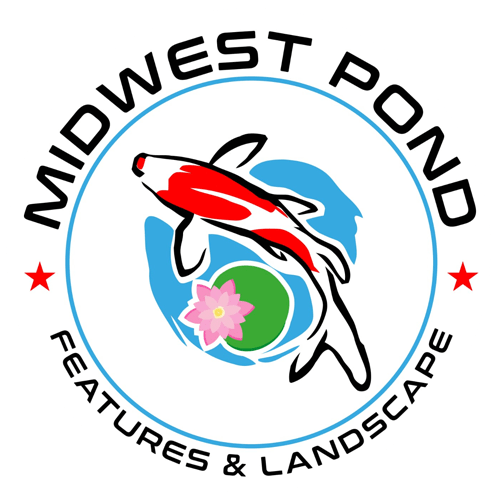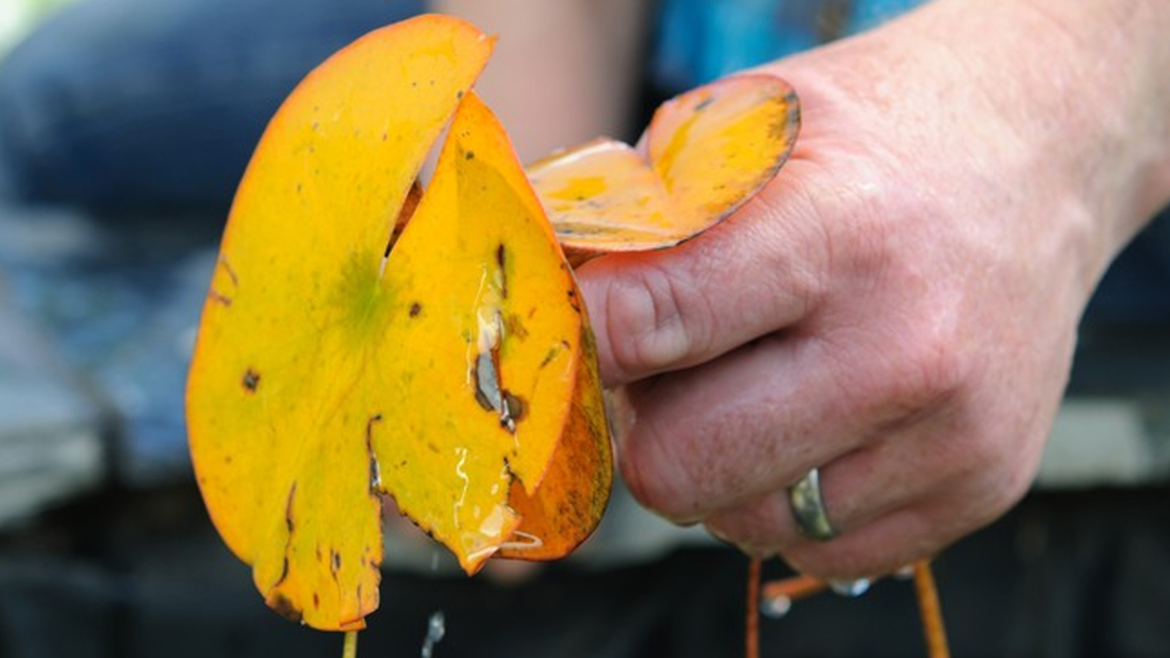(Podcast Episode)
Pond Maintenance Tips for the Summer Season
Summer is a time when the pond can genuinely shine, becoming a focal point of the outdoor space.
However, the warmer months also bring unique challenges that require diligent pond maintenance and care.
Following some fundamental guidelines is essential to keeping the pond looking its best and ensuring the health of its ecosystem.
Here’s an in-depth look at summer pond maintenance tips, covering everything from algae control to pond equipment.
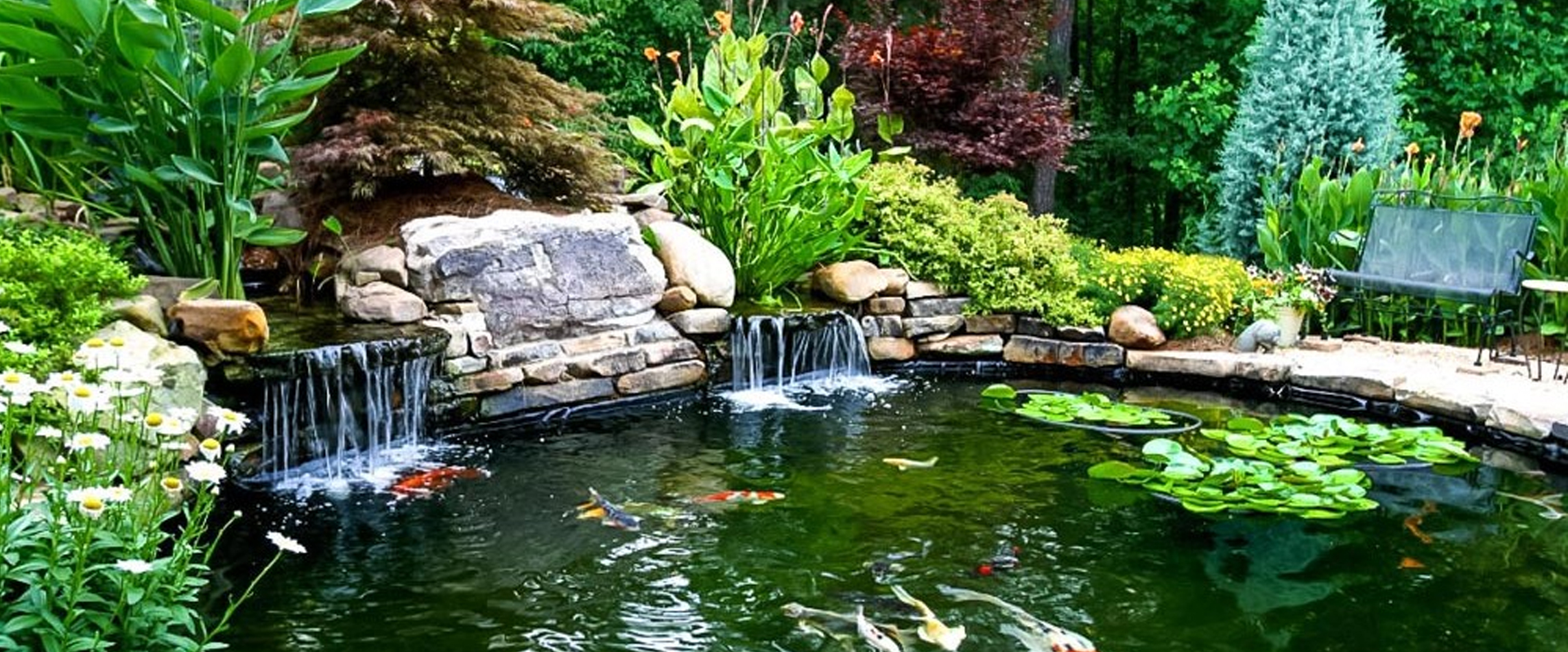
Understanding Pond Water Quality
High-quality water is the foundation of a healthy pond. During summer, higher temperatures can lead to increased evaporation and concentration of contaminants, making regular water testing crucial.
An authentic water testing kit monitors the pH, ammonia, nitrite, and nitrate levels.The ideal pH level is between 6.5 and 8.0.
Ammonia and nitrites should be as close to zero as possible, while nitrates should be under 40 ppm.
Algae Control
Algae blooms are a common issue during the summer. They can turn the pond water green and deprive fish and plants of oxygen. To control algae, consider the following:
Reduce Nutrient Levels: Algae feed on nutrients like phosphates and nitrates. Control these nutrients by avoiding overfeeding fish and regularly removing debris and dead plant matter.
Use UV Clarifiers: These devices help reduce algae by incorporating ultraviolet light to kill algae cells as water passes through them.
Add Beneficial Bacteria: These bacteria break down organic waste, reducing the nutrients available for algae growth.
Pond Aeration
Proper pond aeration is crucial in maintaining water quality and ensuring fish health.
Aeration increases oxygen levels in the water, vital during the hot summer when oxygen levels can drop. One can improve aeration by:
Installing a Pond Aerator: This device increases the oxygen levels by circulating the water and bringing oxygen from the air into the pond.
Adding Waterfalls or Fountains: These features enhance the aesthetic appeal of the pond and help aerate the water.
Pond Equipment Maintenance
Summer is the perfect time to check and maintain the pond equipment to ensure everything functions optimally. Key equipment includes:
Pond Filters: Clean and inspect the pond filters regularly. A clogged filter can lead to faulty water quality and stress fish.
UV Clarifiers: Ensure the UV bulbs function and replace them if necessary. Clean the quartz sleeve to maintain efficiency.
Pond Pumps: Check the pond pump for any blockages or wear and tear. A well-functioning pump is essential for proper water circulation and aeration.
Fish Health
Warmer water temperatures can stress fish, making them more susceptible to disease. To maintain fish health:
Monitor Water Temperature: Ensure the pond does not get too warm. If necessary, provide shade using pond plants or a pond cover.
Feed Appropriately: Overfeeding can lead to dangerous water quality. Feed the fish small amounts and remove any uneaten food.
Quarantine New Fish: When introducing new fish in the pond, it is even better not to do this for several weeks, during which time the fish one has in the pond will be disease-free.
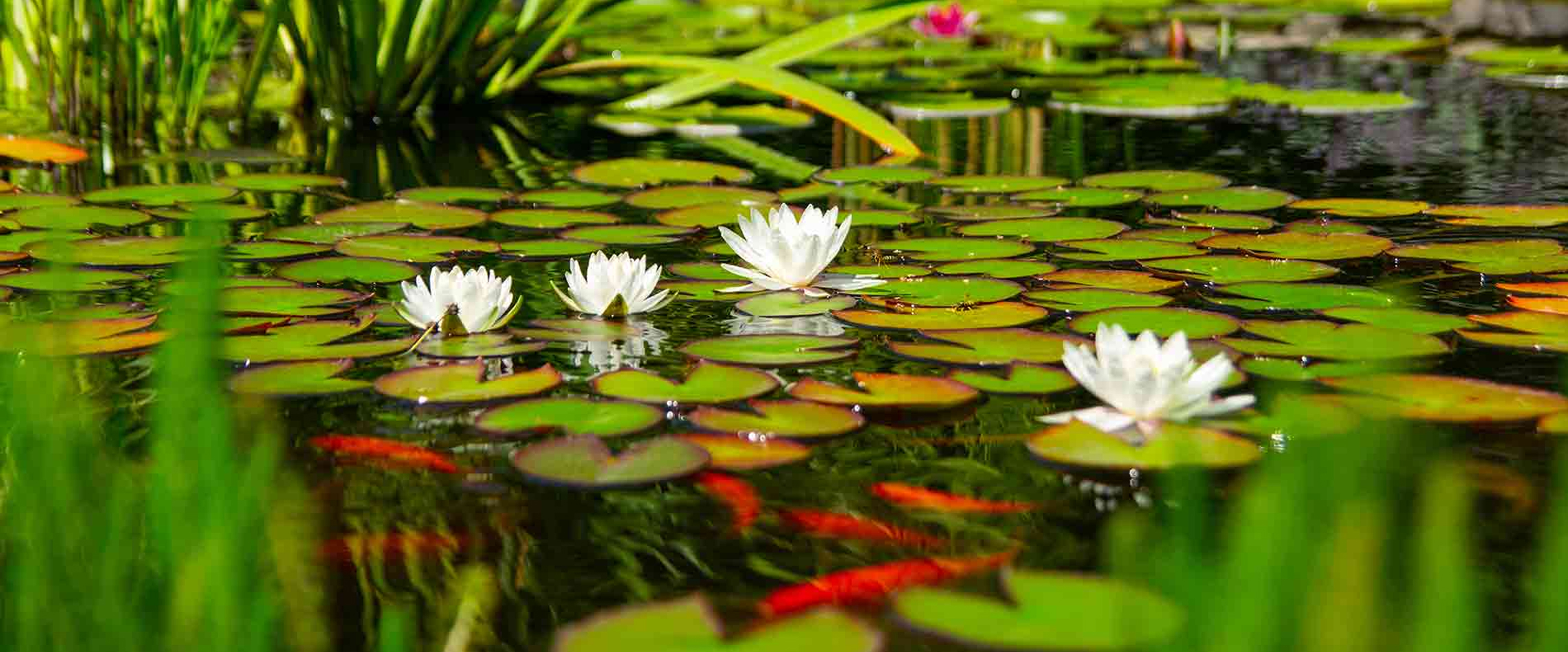
Incorporating Pond Plants
Pond plants play a significant role in maintaining pond health. They provide oxygen, offer shade, and compete with algae for nutrients. Popular pond plants include:
Floating Plants: Plants like water lilies and hyacinths provide shade and reduce algae growth.
Submerged Plants: These oxygenating plants, such as anacharis and hornwort, help maintain oxygen levels.
Marginal Plants: Plants like cattails and irises can help in nutrient uptake and provide habitat for beneficial insects.
Regular Pond Cleaning
Keeping the pond clean is necessary for maintaining water quality and a healthy ecosystem. Regular cleaning tasks include:
Skimming the Surface: Cut the leaves and other debris to avoid the buildup that can rot and pollute the water source.
Vacuuming the Bottom: Use a pond vacuum to remove sludge and debris from the pond bottom.
Cleaning Filters: Regularly clean or replace filter media to ensure efficient operation.
Water Testing
Frequent water testing is vital in preventing issues before they become serious problems.
Test for pH, ammonia, nitrites, and nitrates weekly. Hardness and alkalinity levels should also be monitored, as they can affect the pond’s health.
Using UV Clarifiers
UV clarifiers are a powerful tool in maintaining clear water. By exposing water to ultraviolet light, these devices kill algae and harmful pathogens. To maximize their effectiveness:
Proper Installation: Ensure the UV clarifier is installed correctly and that the water flow rate is appropriate for the unit.
Regular Maintenance: Clean the quartz sleeve and replace the UV bulb annually or as needed.
Preparing for Storms and Heavy Rains
Summer storms can introduce large amounts of debris and cause water levels to fluctuate rapidly. To prepare the pond:
Install Overflow Outlets: These prevent flooding by allowing excess water to escape.
Secure Pond Plants: Ensure that floating plants are anchored and marginal plants are protected from heavy rainfall.
Monitor Water Quality: After a storm, check water quality parameters and make adjustments as necessary.
Seasonal Adjustments
Adjust the pond maintenance routine as summer progresses to account for temperature and plant growth changes. This includes:
Adjusting Feeding Schedules: As temperatures rise, fish metabolism increases. Feed them more frequently but in smaller amounts.
Trimming Plants: Regularly trim and remove dead plant matter to prevent decay and nutrient buildup.
Inspecting Pond Liners
Pond liners can degrade over time, especially under intense summer sun.
Examine the liner to see whether it is worn out or has developed cracks, and repair any leaks promptly to maintain water levels and prevent further damage.
Promoting a Balanced Ecosystem
A balanced pond ecosystem is less prone to algae blooms and poor water quality. Achieve balance by:
Diverse Planting: Include various plant types to provide oxygen, shade, and habitat.
Maintaining Fish Stock Levels: Avoid overstocking the pond, as too many fish can lead to nutrient imbalances and poor water quality.
Encouraging Beneficial Wildlife: Birds, frogs, and beneficial insects can help control pests and contribute to the pond’s ecosystem.
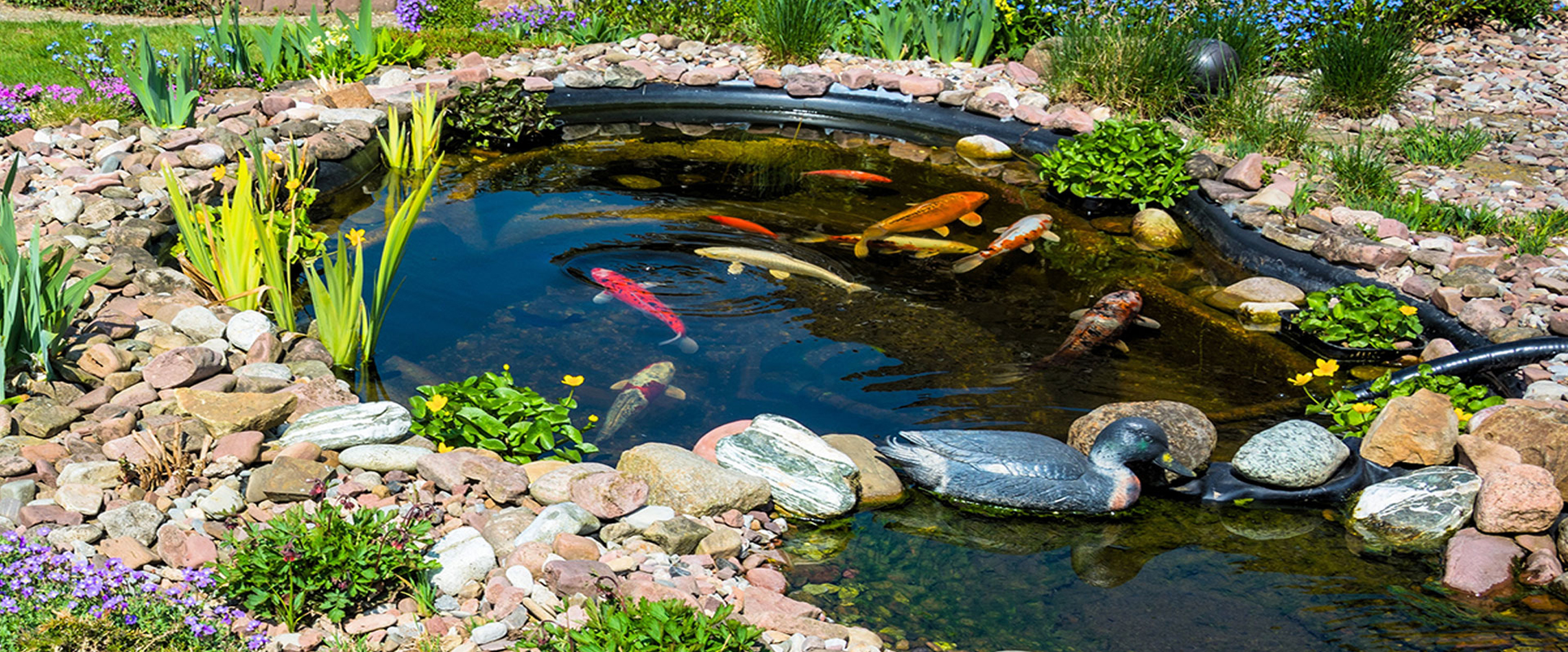
Educating Yourself and Staying Informed
Pond care is an ongoing learning process. Stay informed by:
Reading Pond Care Guides: There are many resources available that offer detailed information on pond maintenance.
Joining Pond Enthusiast Groups: Online forums and local clubs can provide valuable advice and support.
Consulting Professionals: When in doubt, seek help from pond care professionals to address specific issues.
Additional Tips for Summer Pond Maintenance
In addition to the fundamental tips for summer pond maintenance, several other practices and considerations can further enhance the pond’s health and beauty.
Here are some additional strategies and insights to help one achieve optimal pond care during the year’s hottest months.
Shading the Pond
Excessive sunlight can not only raise water temperatures but also promote algae growth. Implementing shading solutions can mitigate these effects:
Shade Cloths: Install shade cloths over the pond to reduce direct sunlight. These are particularly useful during peak sunlight hours.
Floating Plants: Plants like water lettuce and duckweed provide natural shade, cool the water, and inhibit algae proliferation.
Pergolas and Awnings: Building a pergola or installing an awning can offer semi-permanent shade and enhance the aesthetic appeal of the pond area.
Introducing Aquatic Life for Balance
Certain types of aquatic life can help maintain a balanced ecosystem, contributing to algae control and water quality:
Snails: Species like the Japanese Trapdoor Snail help clean the pond by eating algae and decomposing organic material.
Shrimp: Freshwater shrimp can also help keep the pond clean by feeding on detritus and algae.
Small Fish Species: Some fishes can minimize mosquitoes; these include minnows, as they tend to feed on mosquito larvae.
Implementing a Feeding Regimen for Fish Health
During summer, fish are more active and have higher metabolic rates, requiring adjustments in their feeding regimen:
High-Quality Food: Choose high-protein, easily digestible food to support their increased activity levels.
Feeding Frequency: Feed small amounts more frequently. Give small portions at a time and do this often so the fish has to finish the food after a few minutes.
Enhanced Pond Cleaning Techniques
Cleaning is very important for regulating water quality in the pond and for its general well-being.
Power Washing: A power washer can effectively clean the pond’s surfaces for larger ponds without harming the liner.
Deep Cleaning Sessions: Schedule more profound cleaning sessions every few weeks to remove sludge and check for hidden debris.
Leaf Nets: Use leaf nets to prevent leaves and other debris from entering the pond, especially if trees are nearby.
Water Quality Additives
Several products can help maintain optimal water quality by addressing specific issues:
Barley Straw Extract: This natural product helps control algae by slowly releasing compounds that inhibit its growth.
Water Conditioners: These additives can help neutralize chlorine and heavy metals in tap water, making it safer for fish and plants.
Beneficial Enzymes: Enzymes can break down organic material and improve the pond’s biological filtration efficiency.
Pond Edge Maintenance
Maintaining the edges of the pond is just as important as keeping the water within:
Rock and Stone Arrangements: Ensure rocks and stones are stable and free from algae buildup.
Plant Maintenance: Trim and manage terrestrial plants around the pond to prevent excessive organic matter from falling into the water.
Barrier Installation: Consider installing barriers to prevent runoff from entering the pond, which can carry fertilizers and other contaminants.
Wrapping it Up
Proper pond maintenance during the summer is essential for a vibrant and healthy aquatic environment. Key aspects include water quality, algae control, fish health, and regular equipment maintenance.
Regularly checking and maintaining pond equipment ensures efficient functioning. Implementing shading solutions and preparing for seasonal transitions, such as summer storms and winter, is crucial.
Diligent maintenance during summer rewards one with a stunning, healthy pond that enhances the outdoor space and offers a thriving habitat for fish and plants.
Whether you’re a seasoned enthusiast or new to pond care, these tips will help you achieve and maintain a perfect pond, making it a centerpiece of relaxation and enjoyment. Happy Ponding!
